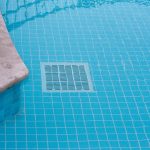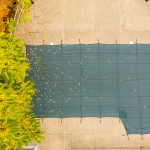2020 Pool Reflections – 1
This year has certainly been a challenge. With that, we have all be able to rediscover some things we may have forgotten:
- The importance of patience and good communication.
- Always be prepared. How many rolls of toilet paper do you have on hand?
- There’s no place like home. Especially if you have a swimming pool!
A national study has found that about 4.1 percent of homeowners have a residential swimming pool. Being one of those families, has certainly been a positive for 2020. This year, your backyard pool provided you with stress relief, exercise, entertainment, a vacation option, and an answer to the eternal “Mom, I’m bored” question!
Having had the opportunity to use your pool more than you ever expected, may have opened up your eyes to the amount of care it needs, how you can improve your pool experience, and the value it has for you and your family. Here is the first reflection on this 3 part series.
SET IT AND FORGET IT? NOT!
This is not how you maintain your swimming pool. A pool needs a great deal of care in order to be safely and properly utilized. Your swimming pool needs to be properly maintained on an ongoing basis whether open or closed. During the open season, things you want to do:
Water needs to be tested regularly. While your technician is only there once a week, you should test your water in between those visits. The pool industry and some manufacturers recommend testing chlorine and pH 2-3 times a week; alkalinity weekly; and calcium hardness, cyanuric acid, metals, and TDS monthly. In between our visits, you can use test strips with a color comparator to get a quick snapshot of how your pool is doing.
Chemicals balanced and added. At your visit, we will test, balance, and add needed chemicals. If you are performing those in-between visit tests and see things are out of range, we recommend you call us so we can instruct you how much of what chemicals to add properly or if an emergency visit is needed. We recommend that you do not add chemicals on your own without consulting a pool professional. Chemicals cannot be mixed and need to be added properly, diluting into water, for your safety and for the efficiency of your pool.
Debris removed as soon as possible. Debris that gets into your pool can lead to surface staining, algae growth, and possible pool surface damage. You can easily remove such debris with skimmer nets or your own hands. If you have one, using an automatic robot cleaner after storms and between service visits can definitely help out.
Safety checks performed. When we come for your weekly visit, we will notify you of any safety concerns we see. As the homeowner, you want to make sure that certain components are intact which include (but not limited to) suction port covers are secure and intact; gates are self-closing and self-latching; fencing has no gaps, holes, or broken areas; chemicals are not stored outside or with unintended access; handrails and ladder are not loose.
If you are interested in developing a pool plan for in between your visits for the 2021 season, please contact us so we can help you develop a customized plan for your pool. Keep an eye out for the Part 2 in this series, when will we address how you can improve your pool experience!






